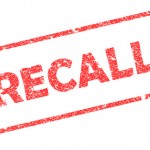In a constantly innovating industry, lithium-ion batteries bring the promise of exciting advancements. They allow for greater mobility and portability, making devices easier to use for patients and healthcare professionals alike. But they come with concerns about safety and reliability. A defect that could lead to overheating or cause the device to simply stop working is problematic for a cell phone or tablet. For a life-sustaining medical device, it is catastrophic. When a serious flaw is discovered, recalls must be executed effectively—and at lightning speed. While any recall is a challenge, those involving lithium-ion batteries are especially difficult because of the complex regulatory requirements surrounding them.
Attend Medical Device Recalls: Procedures & Best Practices | in-person (Coral Gables, FL) or via webcast | October 11-12, 2017 | Learn more
Compliance Complications
With almost any lithium-ion battery recall, the issue crosses multiple regulatory agencies that mandate certain procedures from shipping to disposal—even when the recall is limited to one country. In the United States, medical device recalls of course involve the FDA, but they may also involve the Department of Transportation’s (DOT) Pipeline and Hazardous Materials Safety Administration (PHMSA) and the Environmental Protection Agency (EPA).
In 2016, about half of medical device recalls issued in the United States affected other countries as well. Any time a recall crosses international boundaries, the complexity is compounded. That is especially true in the already complex case of lithium-ion batteries. Globally, organizations involved include the United Nations Sub-Committee of Experts on the Transport of Dangerous Goods, the International Maritime Dangerous Goods Code, the International Civil Aviation Organization (ICAO), and the International Air Transport Association (IATA).
In addition to the sheer number of regulatory agencies involved, the mandates they enforce are constantly shifting in response to new technology and information. In some cases, regulatory uncertainty remains. In the fall of 2016, the PHMSA submitted a proposal to more closely align its rules for transporting hazardous materials with international regulations. For lithium batteries, this included the adoption of a new label and amendments to the requirements for certain small cells and batteries.
But in January 2017, it withdrew the final rule in response to a regulatory freeze by President Donald Trump. Since then it has clarified that while it decides whether or not to adopt the new standards, it will not take enforcement action against carriers operating under either the previous rules or the new pending guidance.
From Testing to Transport
Lithium-ion batteries must undergo rigorous safety tests. But even under normal circumstances, they can cause short circuits or overheat and lead to fires, which are difficult to extinguish. While there are exceptions for small sizes, most are classified as hazardous and bound by specific transportation requirements across multiple regulatory bodies. In addition, carriers have their own individual requirements.
In early 2016, the ICAO prohibited cargo shipments of lithium-ion batteries aboard passenger aircraft, while still allowing them on cargo planes. President Barack Obama sought to enforce the ban on domestic flights within the United States, but President Trump’s executive order has also stalled implementation of this rule. The International Air Transport Association (IATA) guidance states that lithium batteries that have been identified as defective for safety reasons cannot be transported by air. However, a defect that does not involve an increased hazard, such as failure to adequately charge, and products being recalled for an issue unrelated to the batteries they contain, are considered acceptable for air transportation. Ground transportation may be an option even for damaged batteries; however, any product deemed liable to rapidly disassemble; dangerously react; produce a flame; or emit toxic, corrosive, or flammable gases or vapors under normal conditions can’t be transported without special permission from the consigning country. Even in instances where they can be shipped, they require intricate packaging with fireproof lining, along with specialized tape and specific labels that must be placed with precision.
Regardless of the method of transport, failing to comply with these requirements can result in hefty fines from global regulators, which can also mean negative headlines.
 |
Chris Harvey will be speaking at the MedTech Intelligence conference: Medical Device Recalls: Procedures & Best Practices in Coral Gables, FL, October 11–12, 2017 | Attend in person or via webcast | LEARN MORE |
Design Downfalls
Depending on the type of product, batteries may be standalone, packed alongside the equipment they power, or installed in the equipment itself. That design element has a major impact on how the recall will be executed. While products such as cell phones are likely the first that come to mind when it comes to built-in batteries, medical devices are increasingly manufactured with batteries that are difficult or impossible for patients to remove. These designs do have a number of advantages. They allow for a slimmer, sleeker appearance. The batteries are better protected from dust, humidity and other elements that could affect their performance. They are more water resistant.
But there are disadvantages as well, perhaps none greater than when a recall is issued. If a faulty battery is separate from the unit or can be removed, in some cases, the recall remedy may be to simply ship a replacement directly to healthcare providers and patients—without the level of specialized packaging required for batteries with a potential safety issue—and instruct them to dispose of the faulty battery locally. Removable batteries can also be separated from the rest of the product during destruction, reducing the costs associated with hazardous waste disposal. There are fewer options for built-in batteries, making recalls more complex and costly.
Playing with Fire: The Danger of Unpreparedness
Like so many technological advances, lithium-ion batteries come with both exciting possibilities and considerable drawbacks. When it comes to medical devices, they can improve—and even save—lives. But with a high level of complexity and rapidly shifting regulatory requirements, lithium-ion batteries present one of the greatest challenges when it comes to recalls. In this environment, it is crucial to prepare in advance. Regulators, the media and the public expect manufacturers to move quickly when it comes to defects that could cause major property damage and inflict serious injuries.
Manufacturers must consider:
- How quickly they could secure the necessary materials for shipping recalled batteries
- How they would go about notifying their customers and answering a potential surge of urgent questions
- How they would manage the extraordinary manpower required to collect the affected product and send replacements or reimbursements
- How they would manage the data and documentation required for regulatory reporting
The challenges are immense, and in most cases, they can’t be undertaken alone, especially when you consider how quickly both regulators and the public expect action. Third-party suppliers and partners should be identified and secured in advance so they are ready to spring into action right alongside your internal staff. That includes companies that will provide the specialized boxes, labels and other materials needed for a lithium-ion battery recall and those who will solve any pain points in your plans, such as increased contact center support, product processing and data collection for regulatory reporting.
Even medical device companies that have a detailed plan in place may not be prepared if they manufacture products with these batteries but lack specific protocols for a recall involving a battery defect. The same is true for companies that haven’t held a mock recall since they began developing such products. The best way to determine where any gaps exist is to practice each stage of the process based on a lithium-ion battery scenario.
Companies that only incorporate recalls into their overall crisis plan are at risk for serious consequences if a recall suddenly occurs, including legal liability, negative brand perception, and ultimately, a greater financial loss. No matter their size, these companies require a robust, recall-specific plan that includes provisions for the challenges of lithium-ion batteries.






